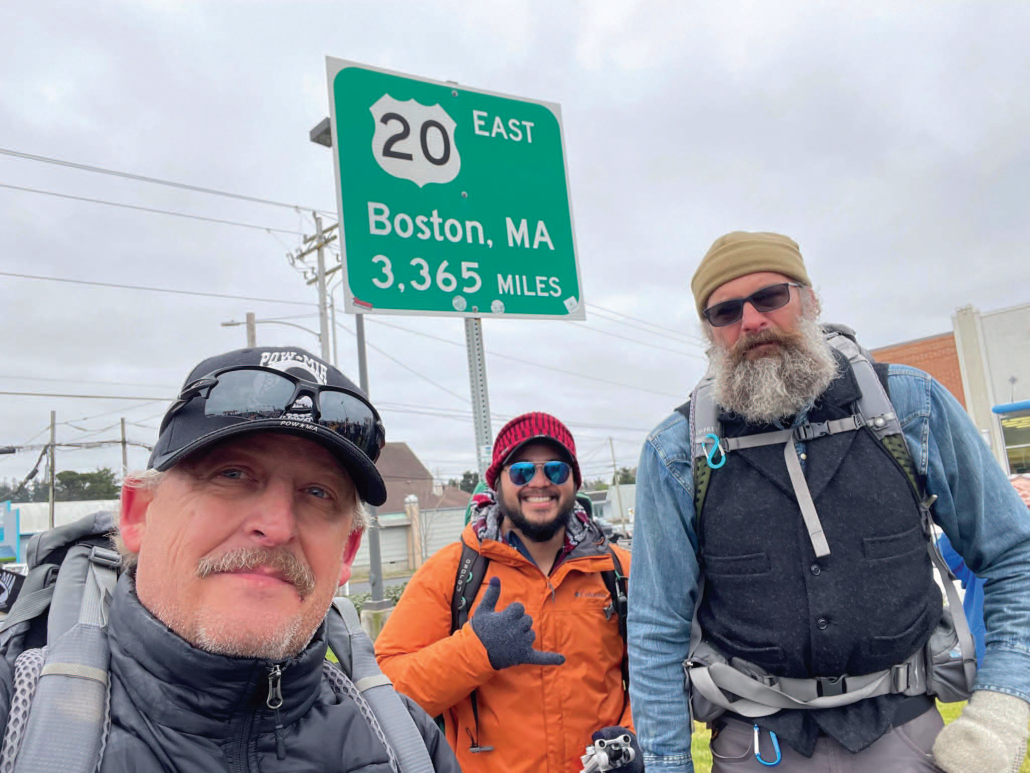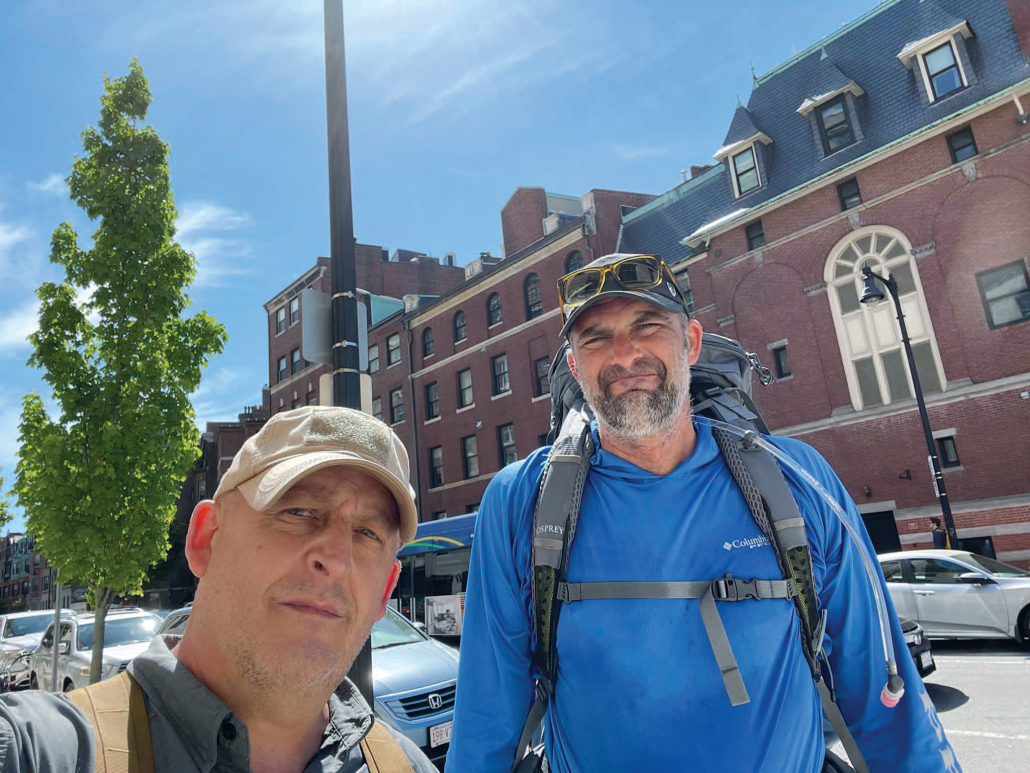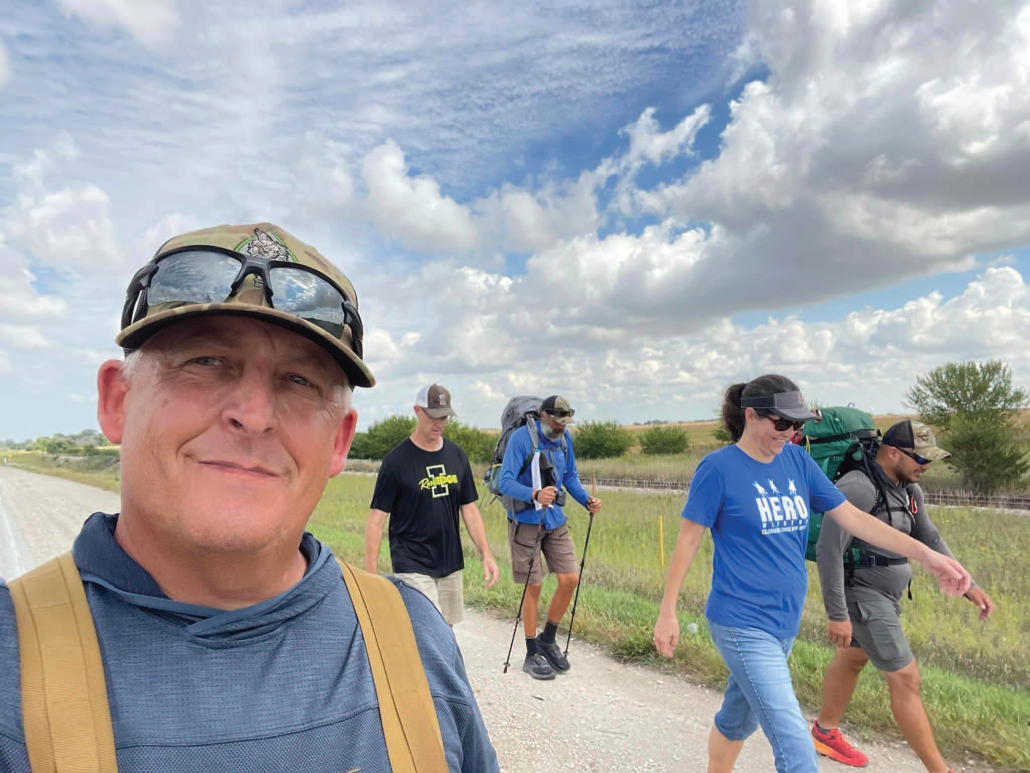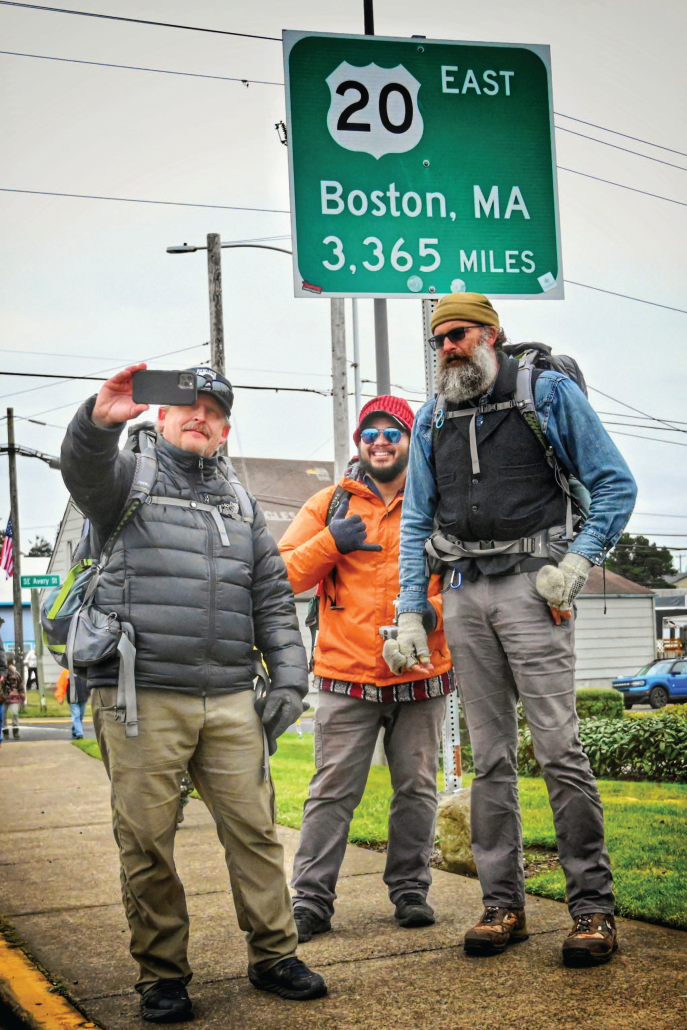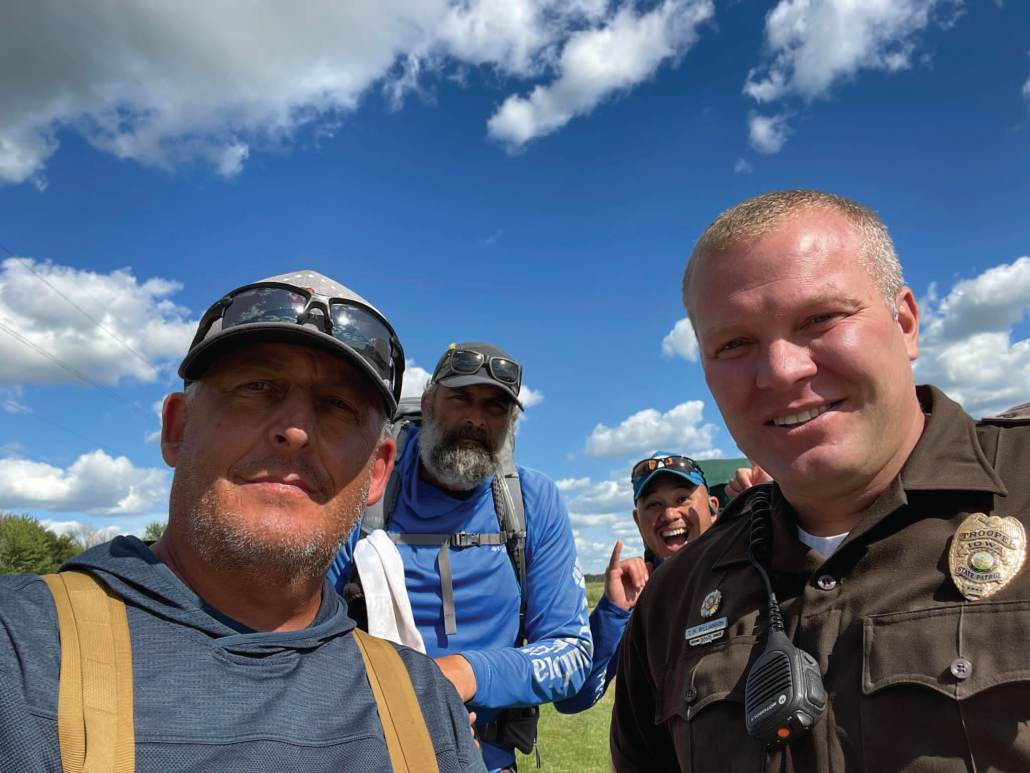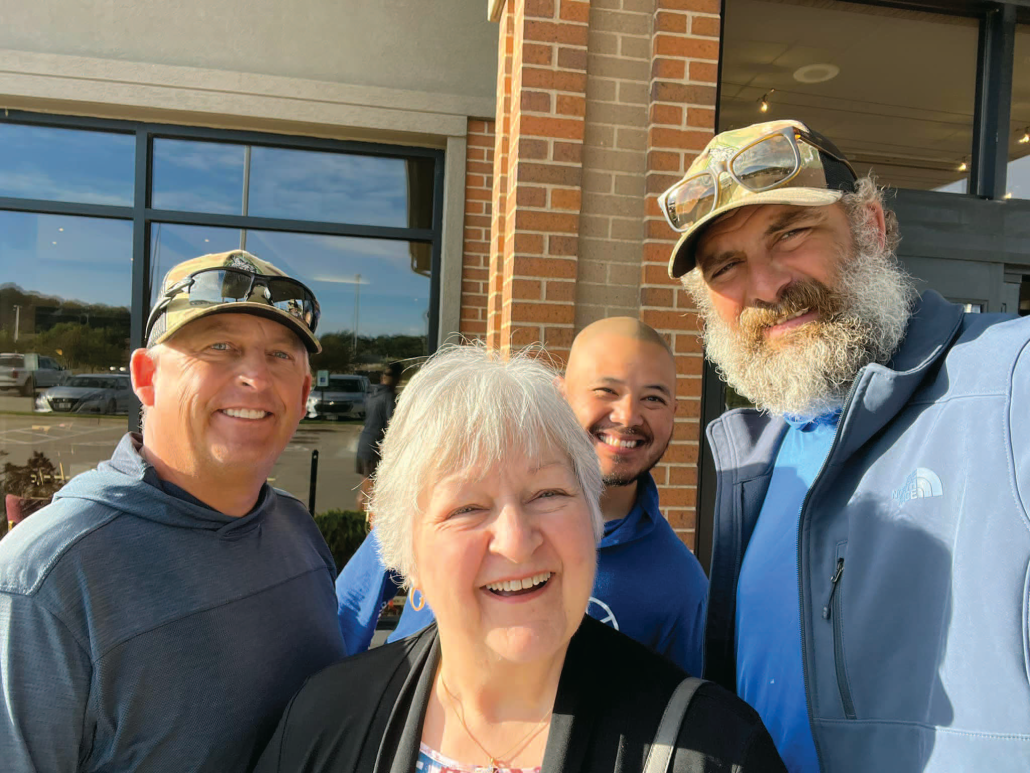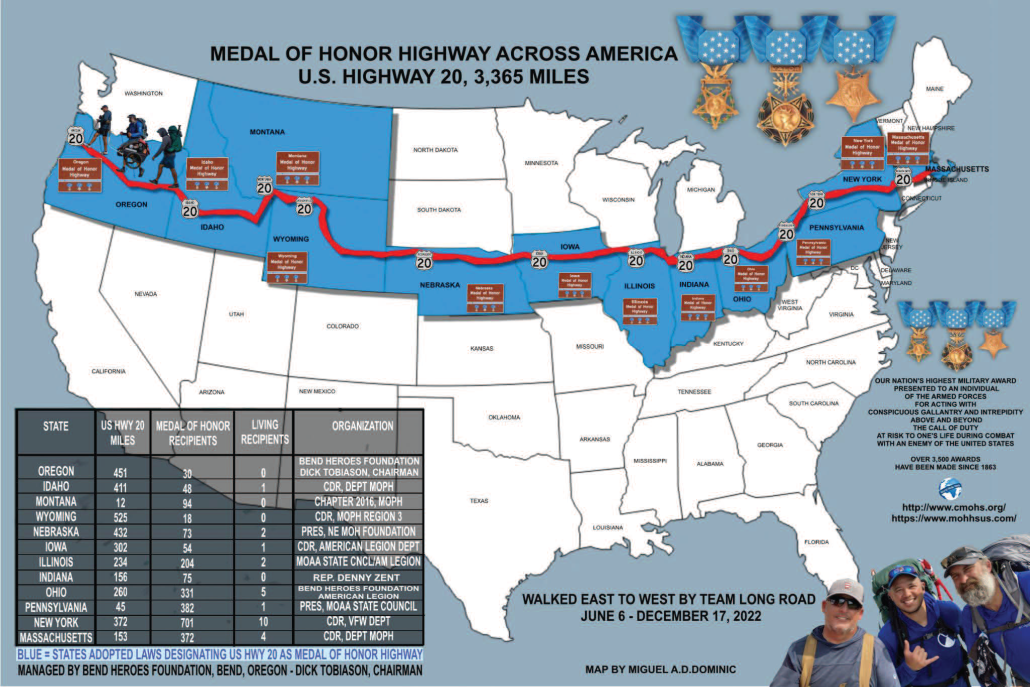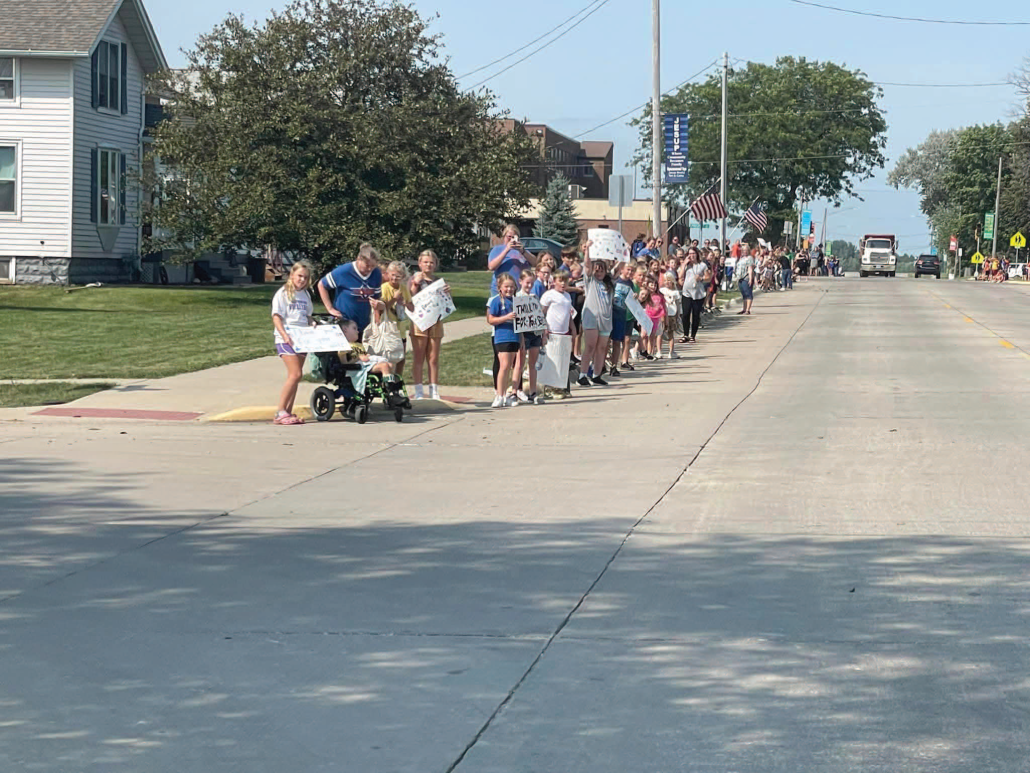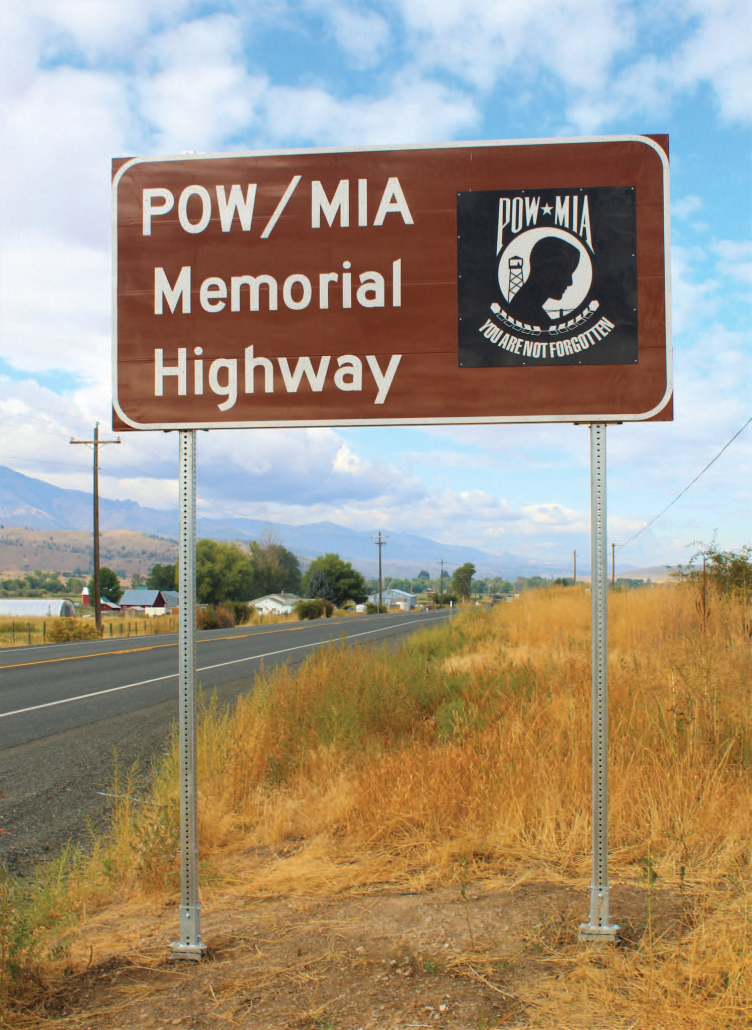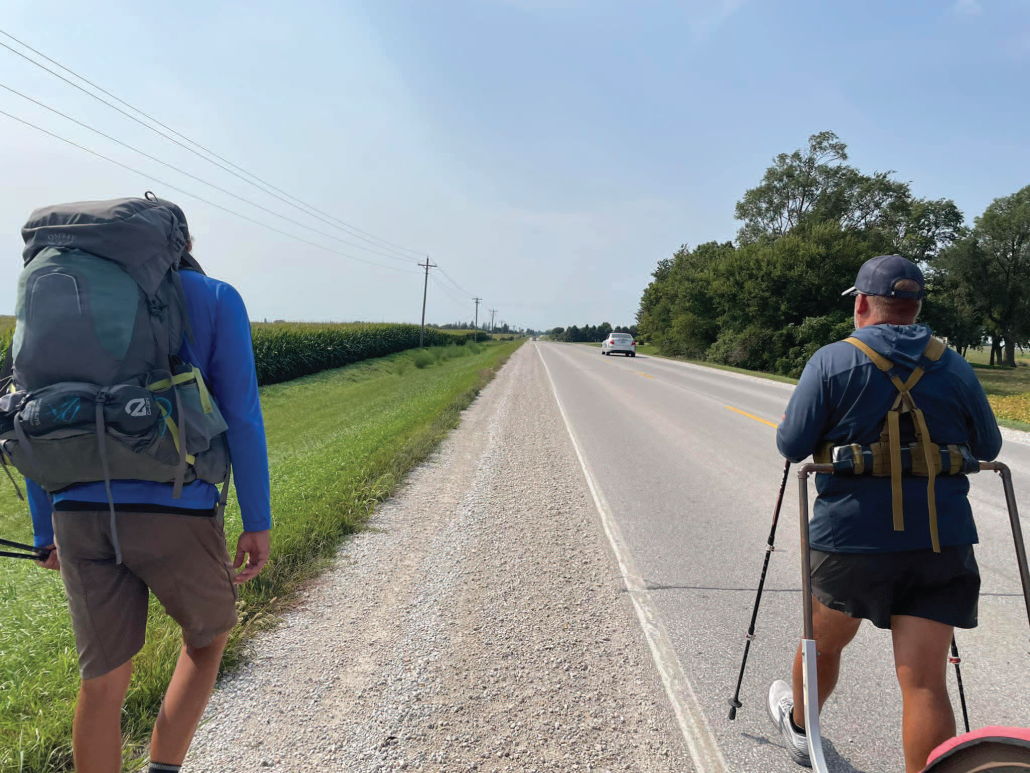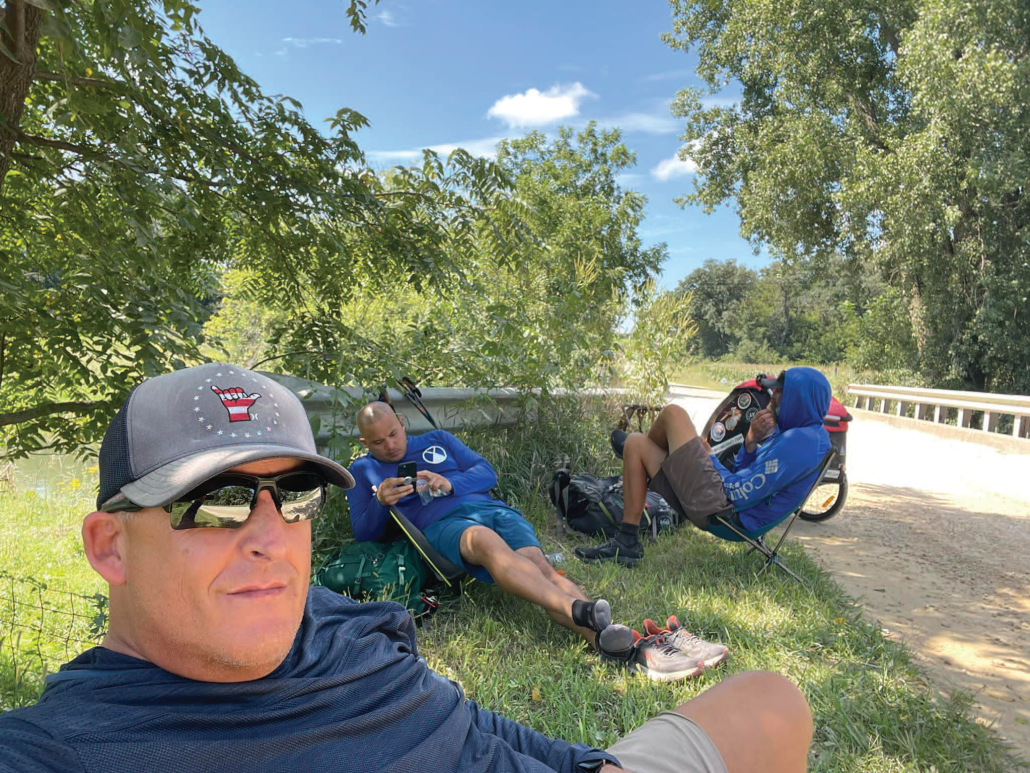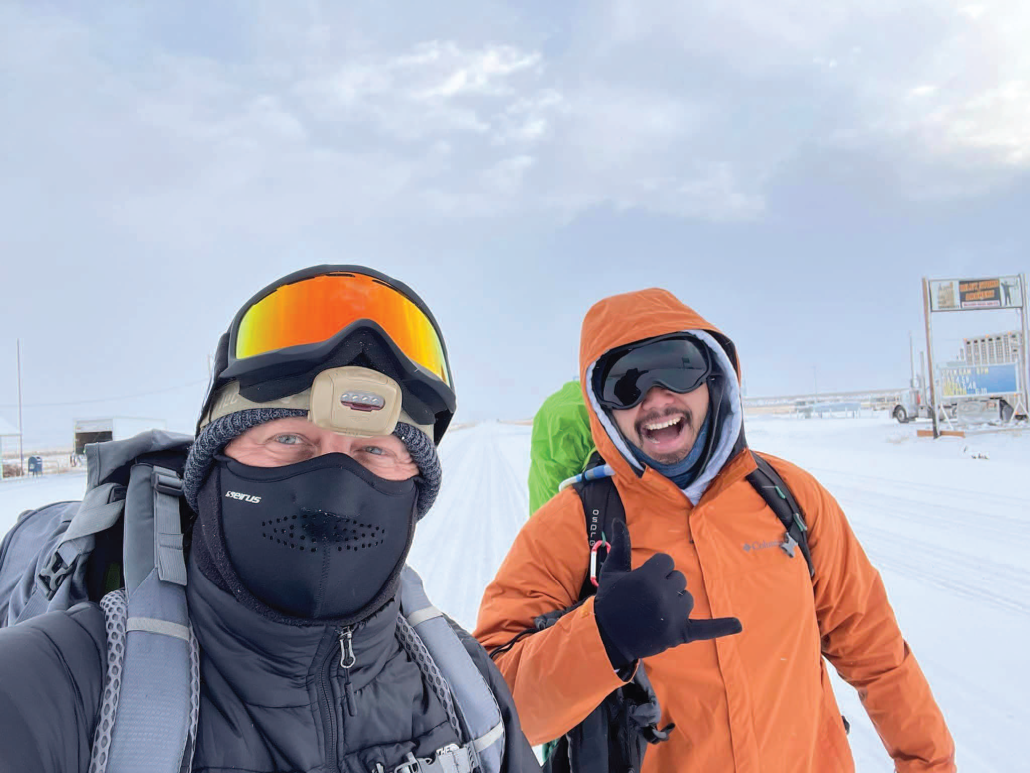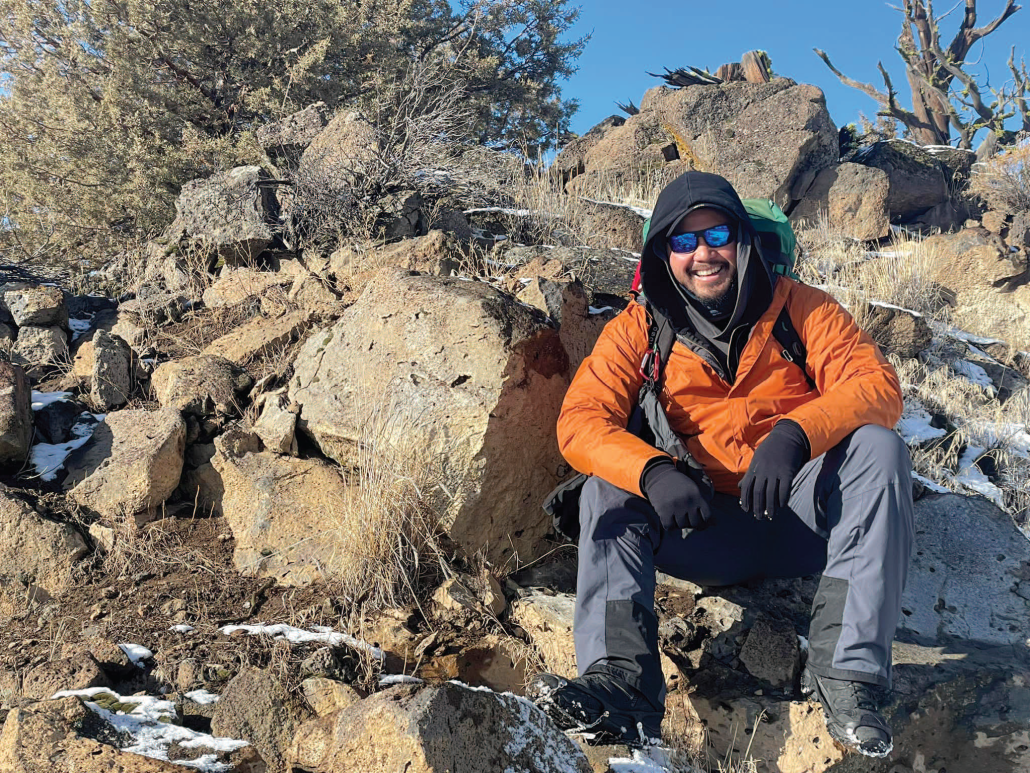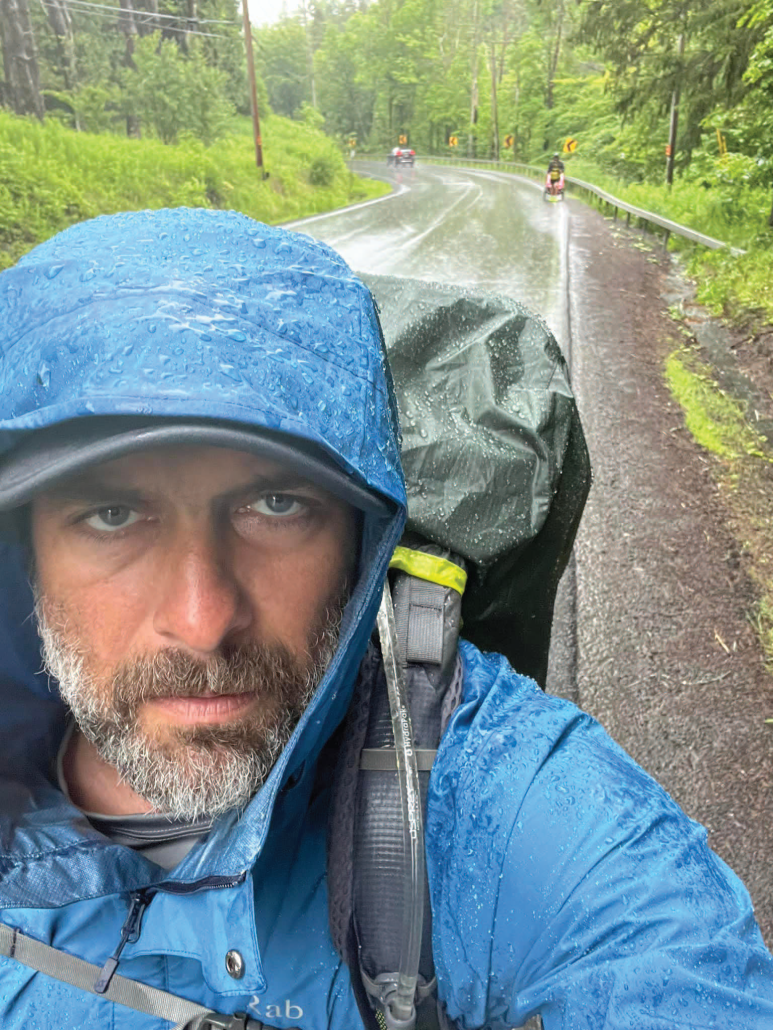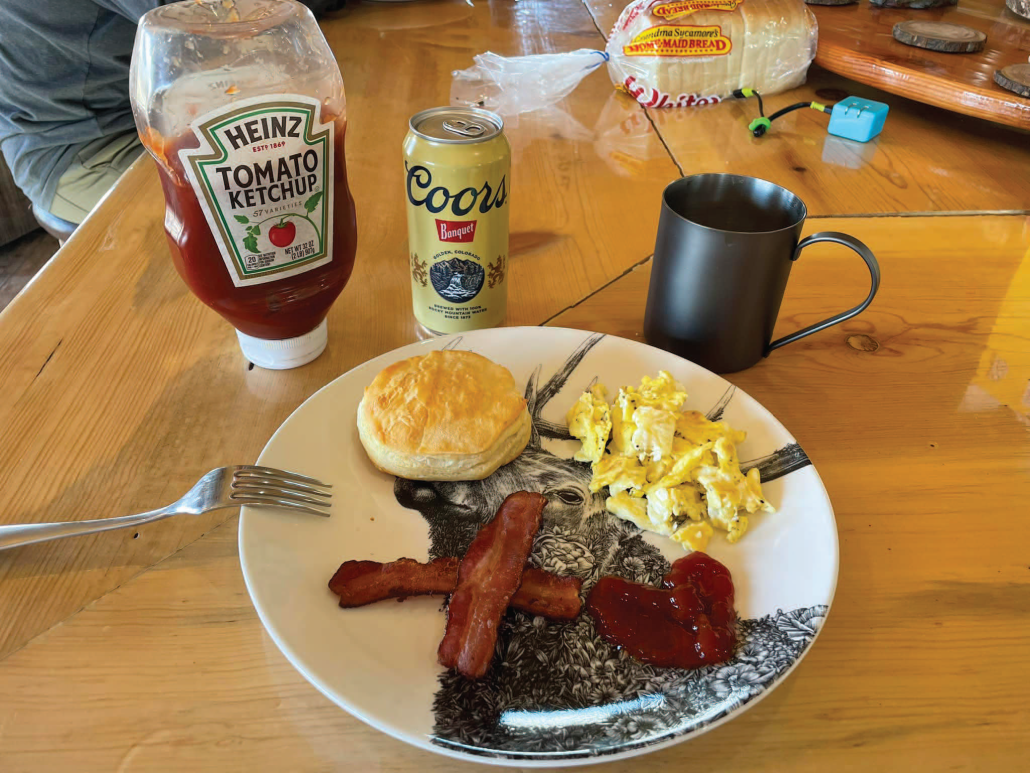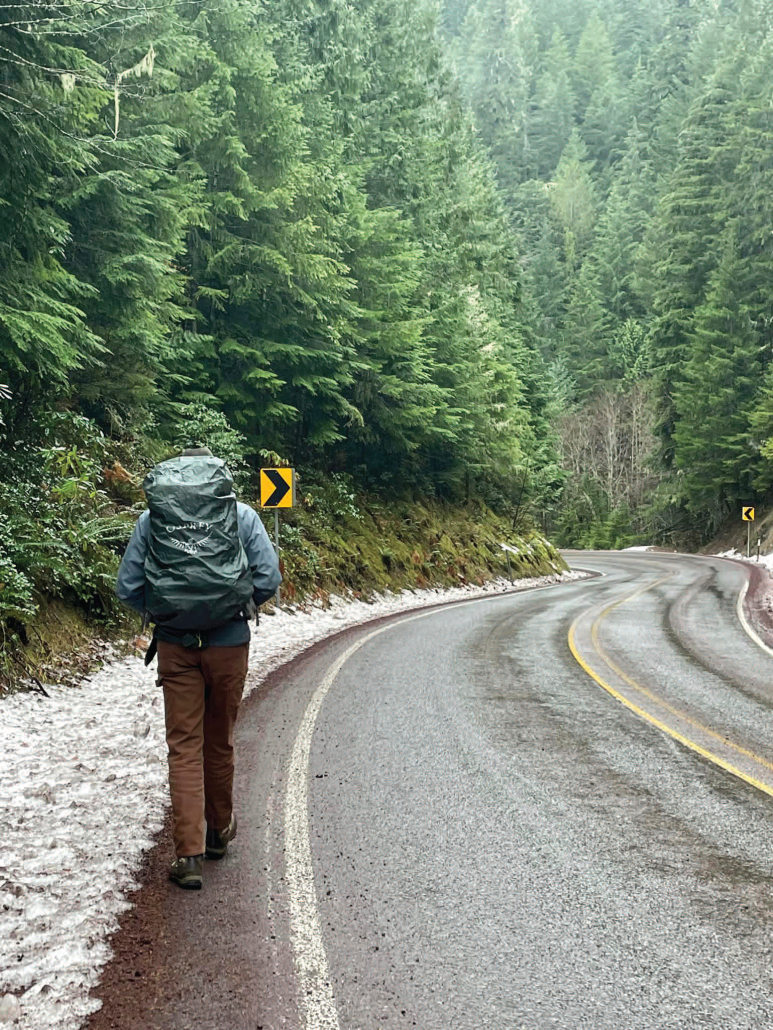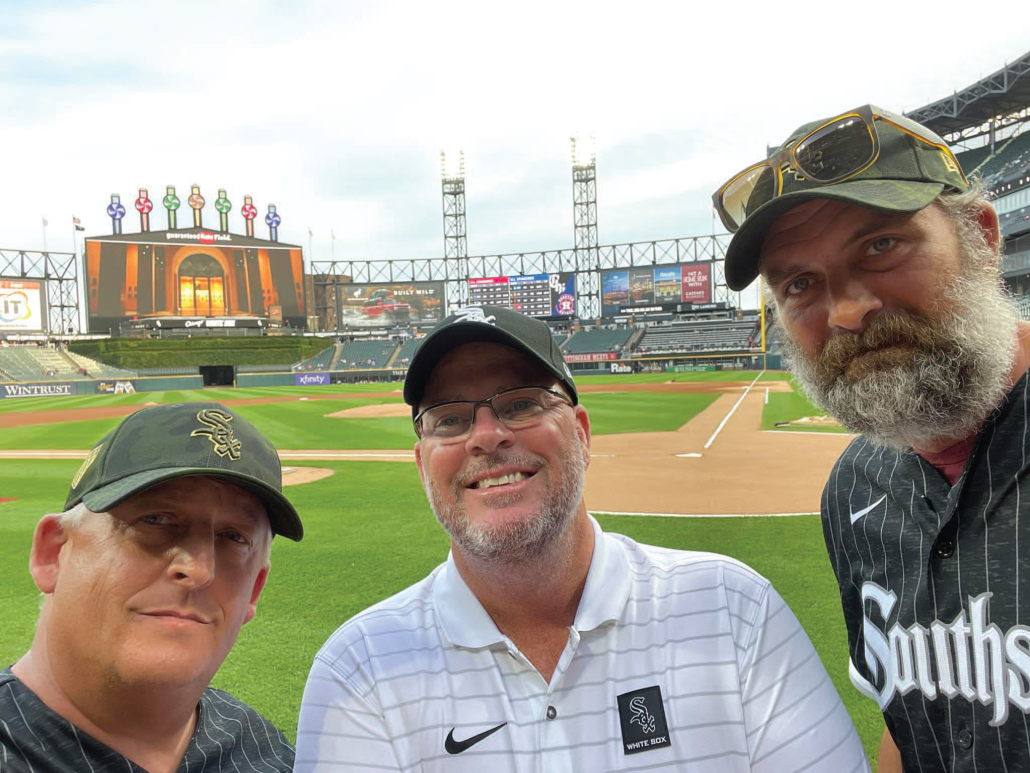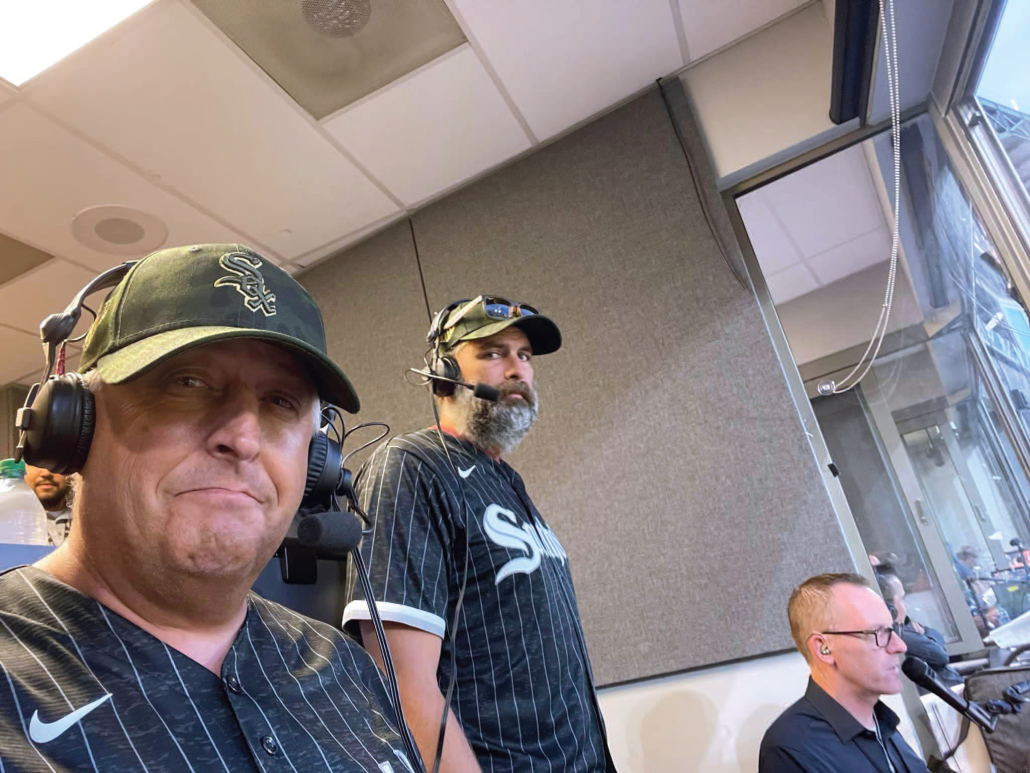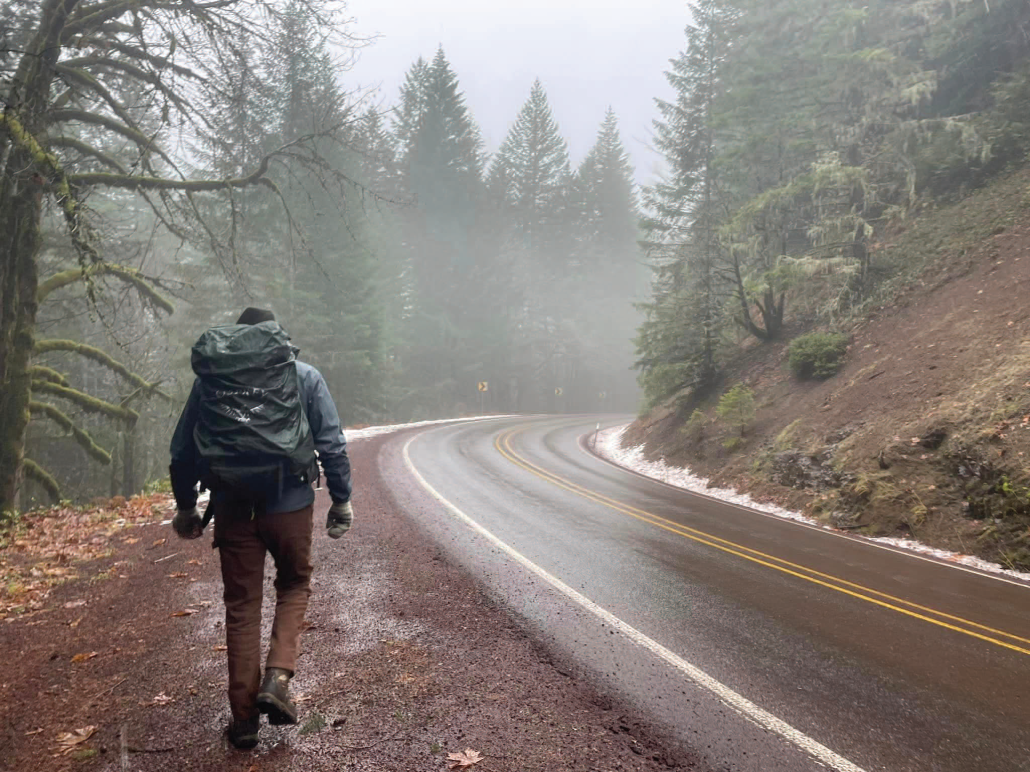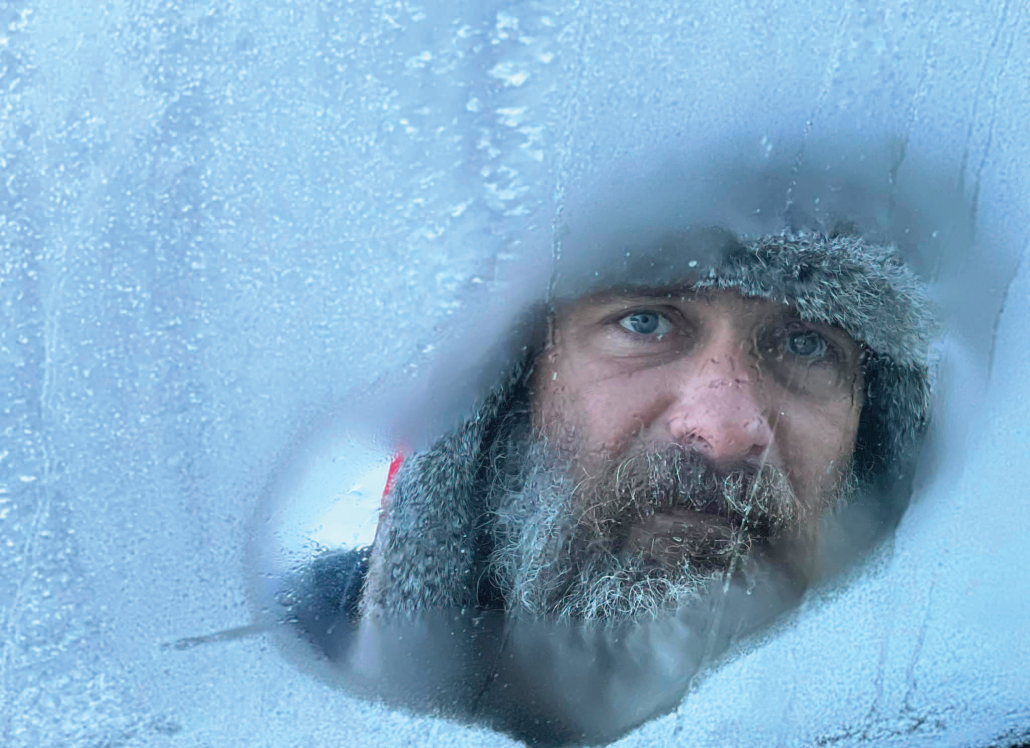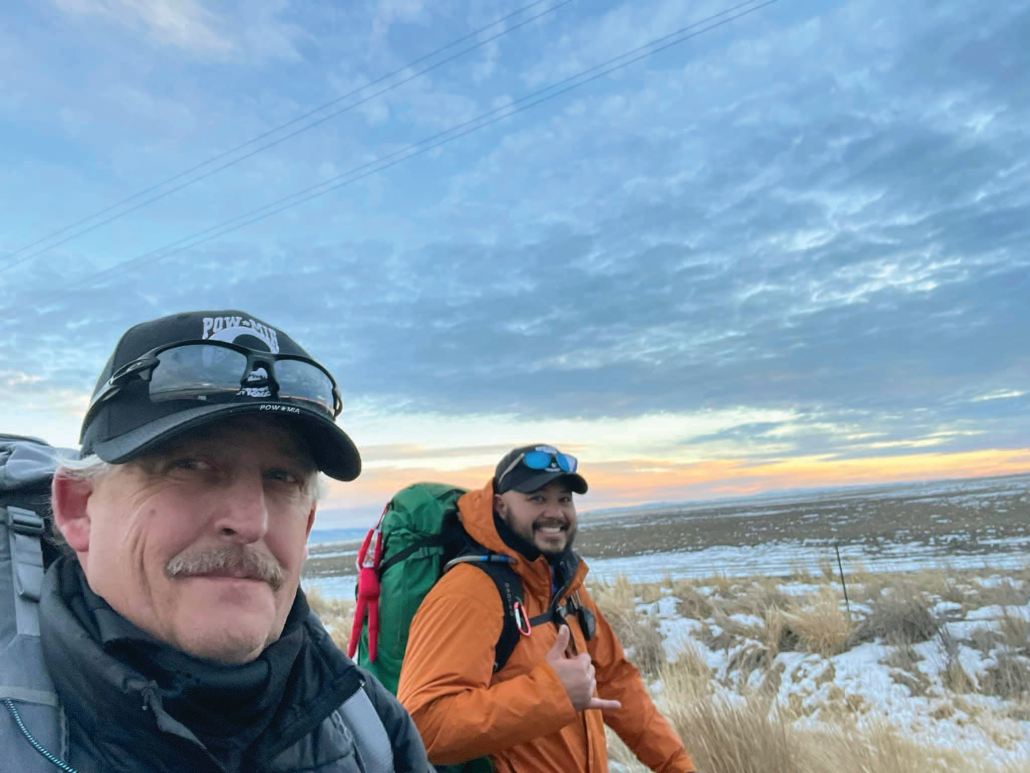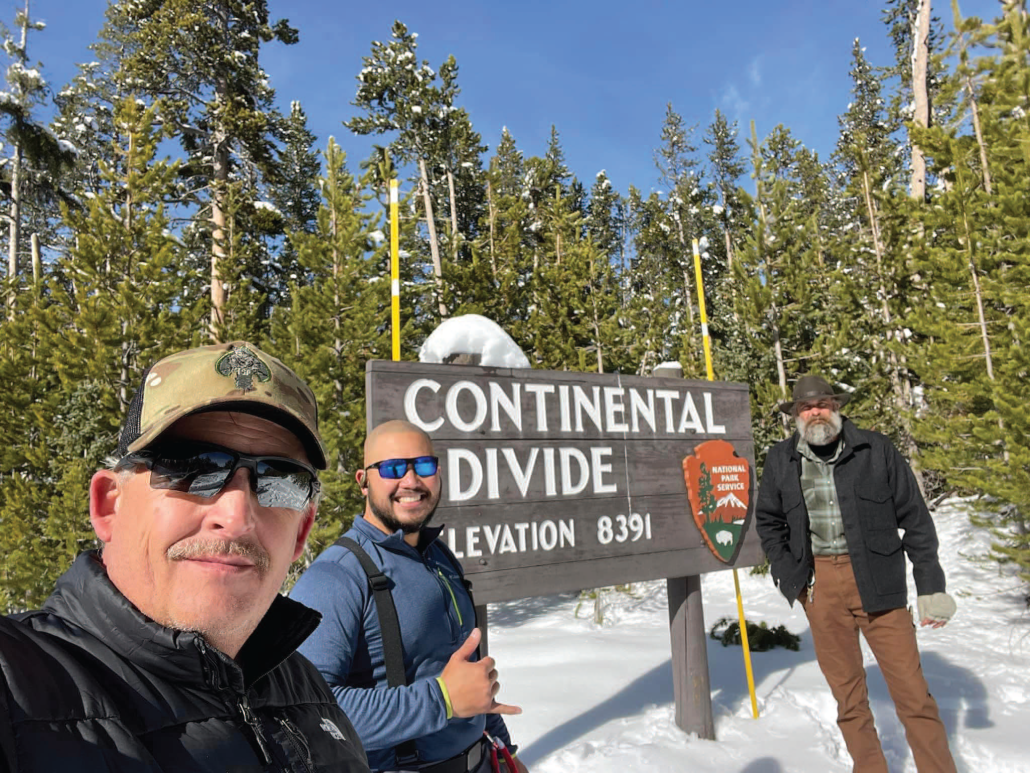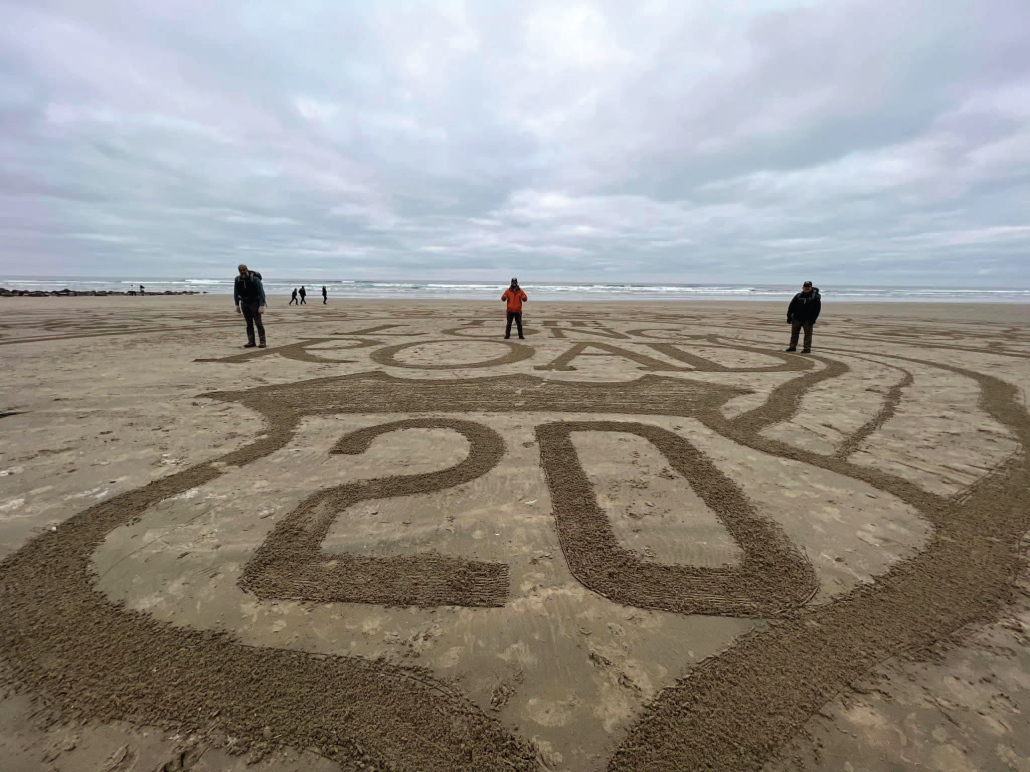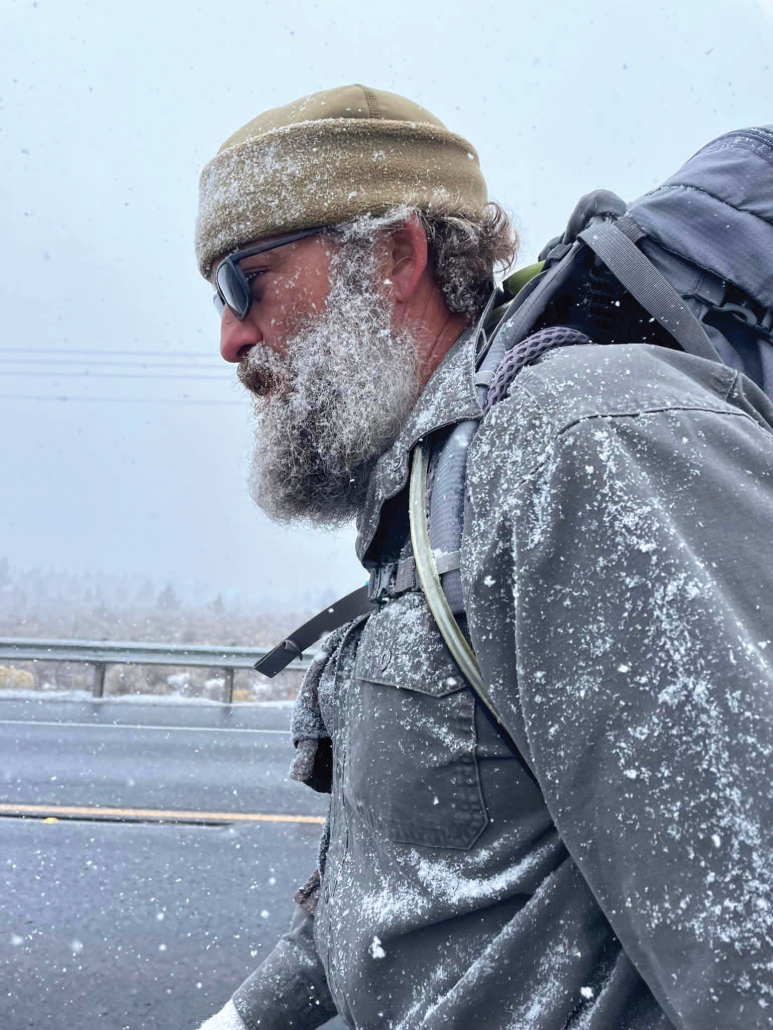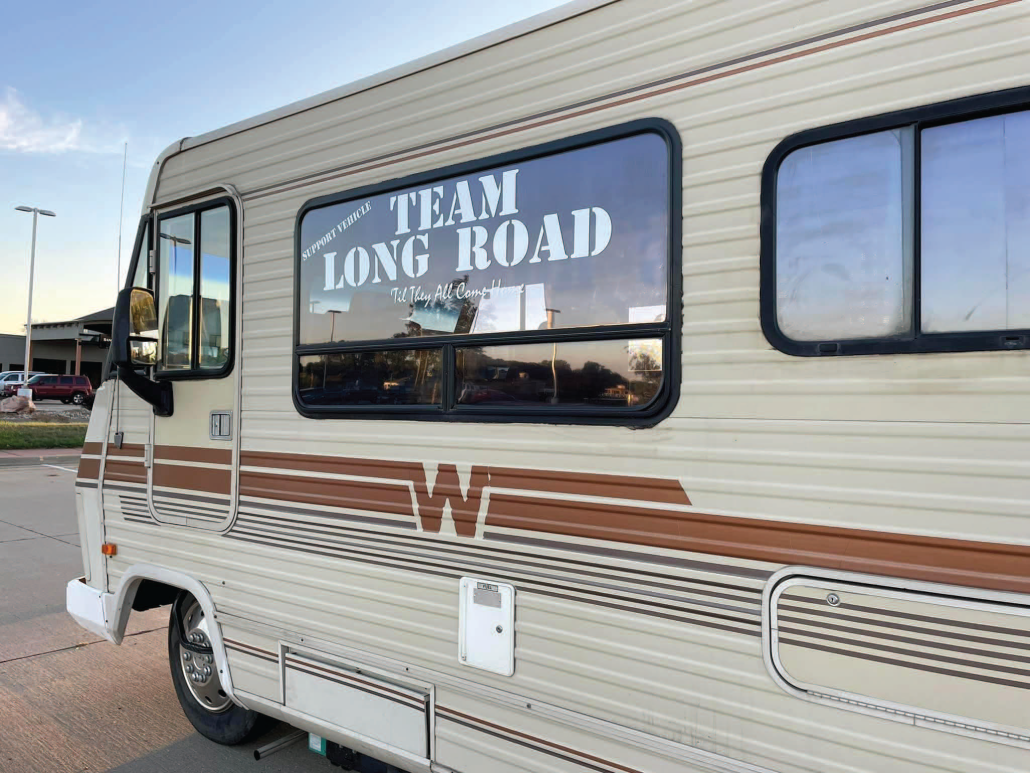
The Long Road
By: Nancy S. LichtmanPosted on April 15, 2023
Marines Walk from East Coast to West Coast To Raise Awareness, Money for MIA Recovery
Early in 2020, Sergeant Major Justin LeHew, USMC (Ret) had an idea. It was a big idea. For anyone who knows LeHew, that’s no surprise. He wanted to take a rather unique road trip with his close friend and fellow Marine, SgtMaj Coleman “Rocky” Kinzer, USMC (Ret). The plan was to take a trip across America. They would be cycling with some hiking mixed in. And along the way, they would visit tourist destinations to check some of the boxes that had been missed during their busy years on active duty. Slowly an idea began to take shape. Not only would they see America, but they planned to use the trip to raise awareness of Missing in Action (MIA) servicemembers and raise funds for History Flight, the nonprofit MIA recovery organization for which LeHew is the chief operations officer and Kinzer is the deputy operations officer.
Kinzer and LeHew started training for the journey, but the COVID-19 pandemic forced them to put their plans on hold—for two years. LeHew couldn’t let go of the idea, though, and in late spring 2022, he decided that it was now or never.
On June 6, 2022, LeHew and Kinzer finally took their first steps on a journey that took them from the Atlantic Ocean to the Pacific Ocean. In an adventure that they dubbed, “The Long Road,” the two Marines walked from Boston, Mass., to Newport, Ore., along U.S. Route 20. It took more than six months for them to cover the 3,365 miles on foot, and they arrived in Oregwon on Dec. 17, 2022, where a crowd had gathered to cheer for LeHew, Kinzer and Ray Shinohara, a fellow Marine who joined his friends in Illinois.
Some of the specifics of the original plan changed—including the route and what “bucket list” items they would check off along the way—but perhaps the biggest change was the mode of transportation. They didn’t use bicycles; instead, they walked the entire coast to coast route.
U.S. Route 20 is the longest highway in the United States and goes through small towns and vast areas of farmland into the heart of America. Access to those small towns and farms is exactly why LeHew chose this route because one thing that didn’t change from his original vision is the two overarching themes that were guiding and motivating the Marines during their odyssey: raising funds for History Flight and raising awareness about the more than 80,000 servicemembers from throughout the nation still unaccounted for.
History Flight is a nonprofit MIA recovery organization dedicated to locating and recovering U.S. military personnel previously deemed unrecoverable. LeHew has been with the organization since his 2018 retirement from the Marine Corps. Kinzer joined the group after he retired in 2019, and Shinohara will soon begin work as a History Flight team lead on Betio Island where recovery of Marines who were killed in the Battle of Tarawa is ongoing. History Flight teams combine historical and archival information with technologies such as ground penetrating radar surveys, magnetometry and forensic archaeology to conduct searches. They currently have a 93 percent success rate in locating the remains they have searched for.
LeHew, a recipient of the Navy Cross for his actions with Task Force Tarawa on March 23, 2003, in An Nasiriyah, Iraq, chose to depart on the anniversary of D-Day for a few reasons. He didn’t want to leave on Memorial Day so as not to detract from the solemnity of the day. “On Memorial Day there should be an attention on the people of this nation who gave everything … it shouldn’t be the kickoff date to highlight somebody else’s thing,” he said. “I want to spend that day in silent remembrance … thinking about my buddies,” added LeHew, who is the National Commander of the Legion of Valor organization.
LeHew also had a more personal reason for choosing D-Day to begin walking. He thought it would be a good way to honor the memory of his father who served in the Army during World War II and participated in the D-Day landings. “On 6 June 1944, my father was a PFC in the 29th Infantry that came out of the front end of an LCVP [Landing Craft, Vehicle Personnel] … and he managed to cross Omaha Beach … and survive,” LeHew said, adding that his father and the others of his generation “came home [after the war] and built these roads, worked in these towns, and made the America of today for all of us that are sitting here today.”
Kinzer and LeHew and their families spent a few days in the Boston area before kicking off the journey. Bright and early, on June 6, the two Marines went aboard USS Constitution and fired the deck gun for morning colors before they took their first steps on what would become the trip of a lifetime. They traveled through Massachusetts, New York, Pennsylvania, Ohio, Indiana and part of Illinois before rendezvousing with Shinohara, west of Chicago in Elgin, Ill., in August.
Shinohara had some catching up to do. In the early days of the hike, Kinzer and LeHew had been through the breaking-in phase and had already worked out the kinks. They were averaging 20 miles per day, and they had a rhythm. But there was no way Kinzer and LeHew were going to leave Shinohara behind. Gradually, he became acclimated and fell in lockstep with “Team Long Road.” Soon after, he took up the job of monitoring the group’s social media in the evening and documenting the journey with photos and video he took using a small drone.
“There [were] definitely tough moments, but I’m with a bunch of tough guys. We all supported each other and made sure that we were all moving forward and not backwards,” Shinohara said. “The first week that I was out there I had huge blisters the size of golf balls, my back was hurting, my hips were hurting—I wanted to quit. But I knew I started this, and you know as a Marine I can’t not finish it. That mentality that I got from being in the Marines and being with other Marines alongside me, it helped push me forward,” he added.
LeHew, Kinzer and Shinohara planned their route so they could go through small towns and talk to people. They wanted to reach as many people as possible to let them know about History Flight’s dedication to live up to America’s promise to men and women in uniform that if they should fall in service to the nation, they would not be left behind and they would not be forgotten.
Early in the journey when they were close to Attica, N.Y., a retired Marine drove by and offered to give them a ride to a hotel in Attica, which is several miles off the path of the highway, but not before sharing a cold beer with them on the side of the road in the late afternoon summer heat. Before dropping them off at a hotel, the fellow Marine took Kinzer and LeHew to his American Legion post in town where they talked about their cross-country trek with the members who were there. According to LeHew, after hearing the reason behind the walk, the Legionnaires passed a hat and collected $1,500 to donate to History Flight. The next morning, LeHew and Kinzer were given a ride from the town back to Route 20 so they could continue westward.
And that kind of encounter happened all across the country. “I wasn’t prepared for ‘Iowa nice,’ ” said Kinzer, adding that the people who live in the towns they walked through in Iowa really supported them in any way they could to include having kids come out of school to line the streets and cheer as the Marines walked by.
As the walkers covered miles, those small-town Americans came together to form an unofficial support system for the men. And it was all done using modern technology but in a very grass roots way, through a Facebook group LeHew set up called “The Long Road.” The group grew in numbers, slowly at first, but the momentum picked up and the group swelled to more than 14,000 followers. Nearly every day, people would post messages in the group, not just to the walkers, but to each other. Posters would provide relevant information about road conditions, weather and lodging for areas LeHew, Kinzer and Shinohara were approaching. The Facebook group members would also coordinate with each other to give assistance to the men along the way.
And as the Facebook group grew, those early followers would answer questions asked by new followers. They also excitedly shared photos and details about meeting the men when they passed through their part of the United States. The Facebook page took on a life of its own according to LeHew. “This isn’t like every platform you find on the internet; this is a good one. There’s no finger pointing, there’s no politics. It was a community bulletin board that worked the way community bulletin boards are supposed to work,” he said.
The cross-country trek wasn’t without its complications. Early on in the journey, LeHew was infected with anaplasmosis from a tick’s bite. He had to leave the road for 10 days while he recovered. This was before Shinohara joined the group, so Kinzer had to power on by himself, which he said was more of a challenge than he had anticipated, adding that he was glad to have some temporary company as he was passing through one town when a resident came out and walked a few miles with him. “One thing I didn’t expect to happen to me was I did get lonely out there on the road. Obviously going with somebody makes it better,” Kinzer said.
Over the miles, they faced danger from drivers they shared the highway with. LeHew was quick to point out, however, that truck drivers on Route 20 were some of their biggest allies. “American truckers were the best people across 12 states,” he said, explaining that truck drivers would alert each other to be on the lookout for the walkers, while passing the word about their mission. The average automobile was more of a concern for Team Long Road. “When you walk a highway there’s not a time that you can take your eyes off the road for 3,365 miles … [just in case] you have to dive over a guard rail because somebody is texting,” said LeHew. He explained that it was draining to do that all day, and that he hadn’t really thought about that aspect of the trip when he was planning it. “You had to really learn, even though it’s not land nav, and ‘all I’ve got to do is follow the road,’ so many different things are happening on this road that you are mentally exhausted at the end of every day,” he said, adding that the hyper vigilance was similar to being on patrol nearly every day for 6 1/2 months.

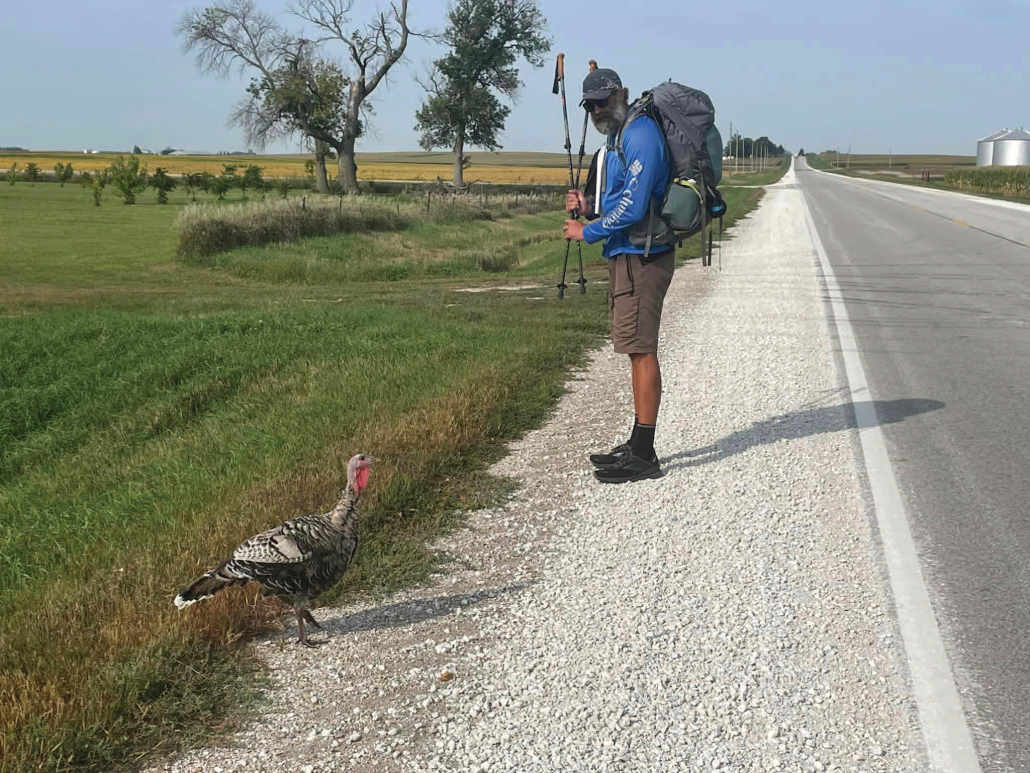
There were some light and funny moments on The Long Road. In September while they were walking by a cornfield in Iowa, a turkey accompanied them for 3 miles. In a video that LeHew posted in the Facebook group, the turkey can be seen trotting along with the hikers. “The Long Road is for everyone, friend and fowl,” quips LeHew in the video, which was viewed 63,000 times and garnered dozens of comments and reactions.
Shinohara said there were other funny animal encounters besides the turkey trot. On one stretch of road, he looked behind him to see two Great Pyrenees dogs running toward him at full speed. He prepared for what he was sure was going to be an attack, but the two large dogs only wanted to play and walked along with the trio for a while. Shinohara said they had to backtrack about a mile to return the dogs to their home out of concern that the exuberant animals might be hit by a car.
When they didn’t have animal companions to laugh at, Kinzer said that during those long days on the road they had some entertaining conversations with each other, and they kept each other laughing with funny stories.
They didn’t walk side by side all the time. Sometimes, they spread out along the road so they could watch each others’ backs. LeHew said he developed an appreciation for the alone time during those stretches. “Most people during, their day, they are moving so fast they don’t have the think space to be able to weigh …. what’s working, what’s not working,” he said. “It allows you to sit there when you don’t have the distractions and everything else to get a certain amount of clarity that isn’t afforded to you anywhere else so you are not making rash, emotional decisions,” he added.
Along the way they accomplished a few of the “bucket list” items that led to the idea of the trip. They walked through Yellowstone National Park and saw the geyser Old Faithful, and their stay in Chicago included taking in a White Sox baseball game with Kinzer delivering the ball to the pitcher’s mound so LeHew could throw out the first pitch. “It’s something I’ll never get to do in my life again,” Kinzer said. “They interviewed us on Sox radio … those are experiences some people never get in a lifetime, you know you can’t trade them for anything,” he added.
At night they slept in hotels or they camped. They ate in diners and small local restaurants and sometimes they cooked. LeHew noted that along the way, volunteer firefighters were incredibly accommodating, allowing the Marines to use the bathrooms, bunkrooms and kitchens in the fire stations. Perhaps their biggest game changer in terms of logistics happened in Moville, Iowa, when they welcomed a new member of The Long Road Team: a motorhome.
For the rest of the voyage, they took turns driving the 1985 Winnebago Chieftain that LeHew bought. It served as a forward operating base on wheels and provided them with the needed supplies when they traversed the more desolate stretches of the route. It also served as a source of shelter when no other accommodations were available.
All across the country, there were moments of absolute awe and wonder. “You’re standing in the middle of an American empty highway and you’re watching nature’s fireworks show go off at night and there’s no headlights that’s disrupting any of this … the whole sky looks like it’s on fire,” said LeHew. “But it looks like it’s on fire because as the sun’s going down and it’s uninterrupted by all of these other influences from headlights or anything else.” he added.
“Until you actually lay eyes on a high alpine lake that’s frozen over, surrounded by snow-capped mountains on all sides … a picture doesn’t do it any justice. Words don’t do it any justice. It’s one of those things where you have to be there, you have to see it,” said Kinzer. He said he made it a point to appreciate the natural beauty of every region they walked through but there was one place in particular that mesmerized him. “Really the place I think that got me the most was the western side of the Cascades … getting into that rainforest area on the western side of them as you drop down into the coastal area that was otherworldly,” he said.
The journey came to a close on Dec. 17, 2022, in Newport, Ore. A large crowd of people lined the streets to greet the walkers as they reached their destination—the end of the highway.
“For the last mile, where everybody started coming in, it was amazing,” Shinohara said. “The craziest thing was seeing people we met along the way. We posted when we were going to get to Newport and there were people that we met along the way on Route 20 that came to see us and … it made it more special because … someone would say, ‘hey, remember me from Iowa?’ It was just an amazing feeling.”
While Kinzer, LeHew and Shinohara have completed their journey on The Long Road, the intent behind their epic journey is still a driving force in their everyday lives. “This affects the living, not just the dead,” LeHew said, referencing the families of those fallen men who were never recovered and the sadness they live with.
With that in mind, History Flight continues its work locating remains of America’s MIAs. Recovery operations on Betio, in the Philippines and in Europe are ongoing and are nearly back to pre-COVID-19 levels. And on this Memorial Day weekend, LeHew and his family will be doing what has become a tradition for them. They will be at Arlington National Cemetery visiting graves, including the grave of LeHew’s father, LeHew’s Marines who were killed in Iraq, and the servicemembers who were killed in World War II, but only recently were brought home through the work of History Flight.
Author’s note: To learn more about History Flight, read “Until They All Come Home” in the Leatherneck November 2020 issue. To donate, visit www.historyflight.com/donate.
